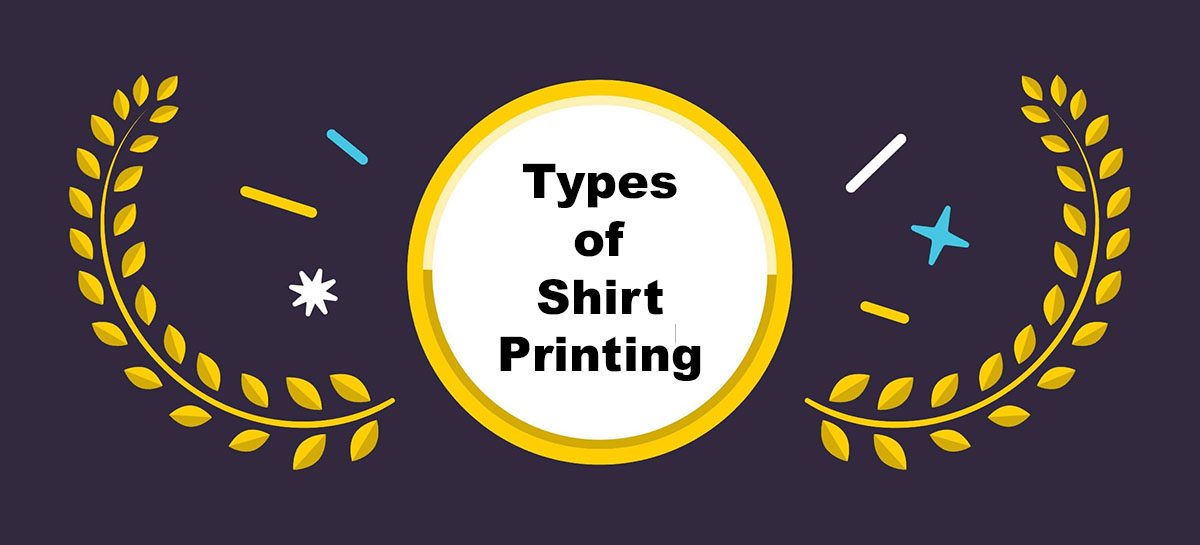Quick Answer: The shirt printing method you choose in print-on-demand directly affects your product quality, customer satisfaction, and profits. Each method—like DTG, DTF, sublimation, or screen printing—has different pros, costs, and use cases, so picking the right one matters for your business success.
In this guide, we’ll break down all the major t-shirt printing methods used in POD, how they work, what they cost, and which platforms offer them.
By the end, you’ll know exactly which method is right for your designs, brand goals, and customer expectations.
What Is Shirt Printing in Print-on-Demand?
Shirt printing refers to the process of applying a design, graphic, or text to a blank t-shirt. In print-on-demand, this happens only after a customer places an order — meaning you don’t need to hold any inventory upfront.
Print-on-demand companies like Printful, Printify, Gelato, and Teespring handle the printing, packing, and shipping for you. But not all printing methods are created equal.
There are six main types of shirt printing used in POD:
- Direct-to-Garment (DTG)
- Direct-to-Film (DTF)
- Sublimation
- Screen Printing
- Heat Transfer Vinyl (HTV)
- Plastisol Transfers
Each has different advantages, costs, and limitations. Let’s look at each one in detail.
1. Direct-to-Garment (DTG) Printing
How It Works
Direct-to-garment printing uses inkjet technology to spray water-based ink directly onto the fabric. The design penetrates the fibers of the shirt, resulting in a soft feel and vibrant colors.
DTG is ideal for printing:
- Full-color designs
- Photos
- Complex graphics with gradients or shadows
Pros of DTG
- No setup costs
- Fast turnaround (perfect for POD)
- Works best on cotton shirts
- Eco-friendly water-based inks
- Great for short runs or single orders
Cons of DTG
- Colors can fade over time (especially with frequent washing)
- Not ideal for polyester or dark-colored fabrics without pretreatment
- Slower for bulk production
Average Cost (POD pricing)
| Print-on-Demand Provider | DTG T-Shirt Base Cost | Example Model |
|---|---|---|
| Printful | $13.25 | Bella + Canvas 3001 |
| Printify (Monster Digital) | $8.40 | Gildan 5000 |
| Gelato | $10.20 | Gildan Softstyle 64000 |
When to Use DTG
If you’re just starting out and want to offer custom t-shirts with low upfront risk, DTG is your best option. Nearly every major POD platform uses DTG as its default method.
2. Direct-to-Film (DTF) Printing
How It Works
DTF printing involves printing your design onto a special film and then transferring it to the shirt using a heat press. The adhesive powder used in this process allows the print to stick to a variety of materials.
This method is gaining popularity for its vibrant colors, durability, and flexibility.
Pros of DTF
- Great for dark-colored shirts
- Works on cotton, polyester, and blends
- More durable than DTG (withstands more washes)
- Cleaner edges and sharper detail
Cons of DTF
- Slightly higher cost than DTG
- Not every POD platform offers it (yet)
- Slight plastic-like feel on large prints
Average Cost (POD pricing)
| Print-on-Demand Provider | DTF T-Shirt Base Cost | Notes |
|---|---|---|
| Awkward Styles | $10.50 | US fulfillment |
| SwiftPOD | $9.25 | Offers DTF on select products |
| Subliminator | $10.95 | Custom branding options |
When to Use DTF
Choose DTF if you want a more vibrant and durable print that works on a wider range of fabrics. It’s especially good for athleticwear, fashion brands, or bold graphics with high contrast.
3. Sublimation Printing
How It Works
Sublimation is a process where special ink is heated until it becomes gas and permanently bonds with polyester fibers. This method results in vibrant, full-coverage prints that won’t crack or peel.
It only works on light-colored polyester garments, not cotton.
Pros of Sublimation
- Long-lasting, permanent prints
- No fading or cracking
- Allows full-shirt, all-over printing
- Lightweight and breathable
Cons of Sublimation
- Only works on polyester or poly blends
- Limited color garment options (white or light shirts only)
- Not suitable for basic t-shirt styles
Average Cost (POD pricing)
| Provider | Sublimation T-Shirt Base Cost | Fabric Type | Example |
|---|---|---|---|
| Subliminator | $13.75 | Polyester | All-over tee |
| Printify | $11.50 | Poly-blend | Unisex tee |
| AOP+ | $14.50 | 100% Poly | Sportswear tee |
When to Use Sublimation
Use sublimation if your brand leans toward sportswear, vibrant all-over prints, or poly-based fashion. It’s also great for high-energy designs that rely on color and detail.
4. Screen Printing
How It Works
Screen printing involves creating a stencil (or screen) for each color in your design. Ink is pushed through the screens onto the fabric in layers.
It’s a traditional method that’s ideal for bulk orders with simple designs.
Pros of Screen Printing
- High-quality, long-lasting prints
- Lower cost per unit in bulk
- Great color vibrancy
- Can be used on various materials
Cons of Screen Printing
- Expensive for small runs (setup cost per color)
- Not suitable for complex, multi-color designs
- Slower turnaround (not POD friendly)
Average Cost (Bulk screen printing)
| Order Quantity | Cost Per Shirt (1 Color Design) |
|---|---|
| 24 units | $10.50 |
| 100 units | $6.75 |
| 500 units | $4.25 |
When to Use Screen Printing
Consider this method only when you’re scaling your POD business and moving into local bulk fulfilment or wholesale. It’s great for events, merchandise, or brand uniforms.
5. Heat Transfer Vinyl (HTV)
How It Works
HTV involves cutting designs out of colored vinyl sheets and using a heat press to apply them to the garment. This method is common in local shops or custom one-off shirts.
Pros of HTV
- Great for personalization (names, numbers)
- Works on many fabrics
- Durable for small logos or simple shapes
Cons of HTV
- Not scalable for POD
- Limited to simple, single-color designs
- Time-consuming to produce in volume
When to Use HTV
HTV isn’t typically used in print-on-demand models, but if you’re fulfilling shirts yourself or offering personalised orders (e.g., team jerseys), HTV has its place.
6. Plastisol Transfers
How It Works
Plastisol transfers are screen prints made onto transfer paper, which are then heat pressed onto the shirt. This combines the look of screen printing with the convenience of heat pressing.
Pros of Plastisol Transfers
- Crisp, professional look
- Durable and vibrant
- Easy to apply on-demand
- Good for semi-automated fulfilment
Cons of Plastisol Transfers
- Requires stock of transfer sheets
- Not offered by all POD providers
- Upfront printing of transfers
When to Use Plastisol Transfers
Best for brands transitioning to self-fulfilment but still want that professional screen print look without committing to large inventory.
Comparing Shirt Printing Methods
Here’s a side-by-side comparison to help you decide:
| Method | Fabric Compatibility | Setup Cost | POD Friendly | Durability | Print Quality | Best Use Case |
|---|---|---|---|---|---|---|
| DTG | Cotton, blends | None | ✅ | Medium | High | Full-color designs |
| DTF | Cotton, blends, poly | None | ✅ | High | High | Bold graphics |
| Sublimation | Polyester only | None | ✅ | Very High | High | All-over prints |
| Screen Printing | Any | High | ❌ | Very High | High | Bulk orders |
| HTV | Most fabrics | Medium | ❌ | High | Medium | Personalisation |
| Plastisol Transfers | Most fabrics | Medium | ⚠️ Semi | High | High | Semi-automated fulfilment |
How to Create T-Shirts with Print-on-Demand
Creating your first t-shirt using POD is easier than most people think. Here’s the step-by-step:
- Choose a POD platform
Top options: Printful, Printify, Gelato, SPOD - Pick your shirt model
Look at fabric, fit, weight, and base cost. Popular options:- Bella + Canvas 3001 (DTG)
- Gildan 64000 (DTF or DTG)
- Subliminator Poly Tee (Sublimation)
- Upload your design
Use high-resolution PNG files (300 DPI) with transparent backgrounds. Make sure the file dimensions match the print area. - Select the printing method
Most platforms auto-select based on the shirt and design. You can often choose DTG or sublimation depending on the product. - Order a sample
Always check print quality and fit before selling to customers. - Connect your store
Integrate with Shopify, Etsy, Amazon, or WooCommerce. Sync your product listings and set your retail prices. - Start selling
Once orders come in, your POD provider handles the rest: printing, packing, and shipping.
Final Thoughts
The print method you choose matters more than you think. It affects your shirt quality, your branding, and your returns.
If you’re starting out — go with DTG or DTF.
If you’re scaling — test sublimation and eventually screen printing.
Print-on-demand gives you the flexibility to test, adapt, and build without upfront risk. The key is to know your options, sample wisely, and build trust with quality.






